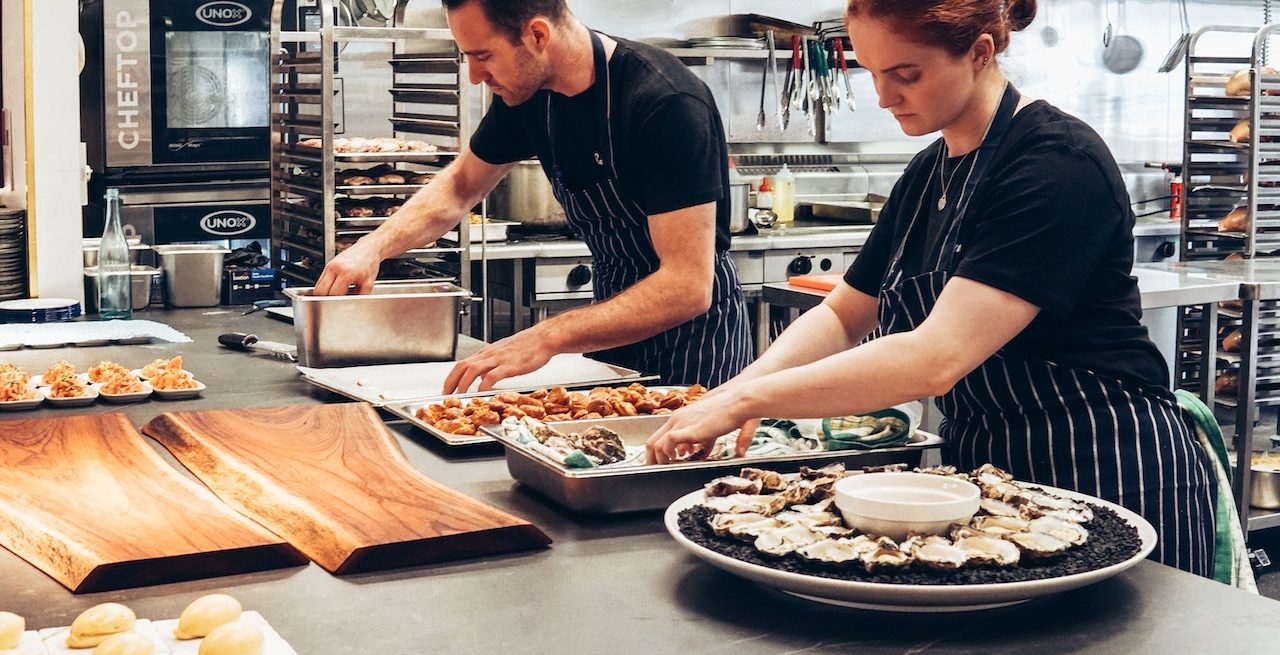On World Food Safety Day, Here’s How Internet of Things Solutions Can Help
4 Min Read By Tom Woodbury
In the food services industry, safety is paramount to protect customers, brand reputation, and, ultimately, profits. Food that is not stored or handled properly can result in serious, even deadly, illnesses. In fact, the World Health Organization reports that on average, 1,600,000 people get sick each day due to unsafe food. That’s why World Food Safety Day aims to promote food safety globally and celebrate the efforts being made to prevent foodborne illness.
Today, technology is revolutionizing food safety practices by enabling centralized and automated solutions. This has led to exponential growth in digital food safety across the industry. In fact, the growth of digital food management solutions from 2021 to 2026 is predicted to be $2.39 billion – with the food safety segment being the largest contributor to market growth.
In addition to protecting customers, there are several other factors driving the need for digital food safety solutions including, increasing food costs, labor challenges, compliance standards, and increasing governmental involvement and regulations, along with the rising demand for data-driven processes throughout the food and beverage industry.
One transformative technology driving food safety initiatives is the Internet of Things (IoT). In the spirit of World Food Safety Day, let’s take a look at how IoT is helping with food safety initiatives, while providing other critical business benefits in the process.
Automate Temperature Monitoring
It’s no secret that digitizing processes offers tremendous value across industries, with worldwide spending on digital transformation reaching 1.59 trillion U.S. dollars in 2021, up over 20 percent from the previous year. In food services, digitizing processes like temperature monitoring and logging of on-site food storage via IoT-enabled automation delivers many benefits. It eliminates the need for staff to manually monitor and log temperatures of cold storage areas “by hand” using paper logs or spreadsheets. By leveraging IoT-powered sensors in refrigerators and freezers, temperature data can be automatically collected, transmitted, and centralized into intelligent systems. It saves time by decreasing the manpower needed for back-of-house (BOH) operations, enabling staff to focus on higher-value tasks such as serving customers and enhancing overall operational efficiency.
With IoT-enabled digital temperature monitoring, alerts can automatically be sent to operators if temperatures fluctuate above or below required levels, allowing immediate corrective action. Should refrigeration failures occur, or if doors are left ajar, this proactive approach ensures that fluctuating temperatures are dealt with swiftly – preventing costly repercussions associated with spoiled food that impacts overhead. Additionally, this proactive monitoring helps businesses meet food safety and compliance regulations. According to a CDC study, one in six Americans yearly gets sick from contaminated food and beverages. With foodborne illness costing the US about $15.6 billion annually, it emphasizes that automated temperature monitoring is essential to digital food safety.
Additionally, more sophisticated sensors can ensure temperature data is recorded during power outages and backlogged data is properly accounted for, which is especially important when outages occur overnight or after hours. Without monitoring, these outages could go unnoticed, potentially leading to the serving of food stored at unsafe temperatures. Automated temperature monitoring allows for continuous monitoring, even during unstaffed hours and reduces the risk of human error commonplace with manual practices.
Promote Cleanliness and Enhance Custodial Processes
Of course, when talking about the food service industry, safety extends beyond the plates coming out of the kitchen. Everything from air quality to the hygiene of employees and customers must be prioritized. However, staffing shortages and budget constraints have made these safety practices difficult in recent years.
According to a National Restaurant Association survey fielded in November 2022, 62 percent of operators say their restaurant does not have enough employees to support their existing customer demand. The same source reported 8 in 10 restaurant operators with job openings that are difficult to fill. In an era plagued by staffing shortages, automating custodial practices can help restaurants do more with less, saving precious time and money. For example, employing smart, connected restroom technology – such as sensor-enabled paper towel, toilet paper, and soap dispensers – creates operational efficiencies by reducing manual processes, while also promoting cleanliness and hygiene. Rather than using a time-based cleaning schedule, sensor-enabled technology can alert staff in real-time when restrooms require cleaning or dispensers require restocking – reducing waste, creating better experiences for customers, and boosting employee retention. Other connected restroom technologies include connected flush valves and faucets, which provide modern, efficient experiences for all, while reducing water consumption.
Using connected paper towel and soap dispensers in food service establishments also plays a crucial role in ensuring food safety compliance by promoting proper hand hygiene amongst staff, a critical practice to prevent the spread of harmful bacteria and ensure food safety. Regulatory agencies, such as the Food and Drug Administration (FDA) and the Centers for Disease Control and Prevention (CDC), provide guidelines and regulations for proper hand hygiene in food handling and preparation. These guidelines include requirements for hand washing with soap and water for a specified duration, proper hand drying methods, and when hand washing should be performed. By automatically notifying staff of the need for paper towel and soap replenishment, the risk of running out of these essential items is minimized, ensuring that hand washing stations are always stocked.
Future-Proof Operations with Smart, Connected Restaurants
Ensuring food safety requires ongoing commitment from food service professionals, but with the help of technology solutions like IoT, they can proactively enhance the safety and well-being of customers. By leveraging these solutions, the food service industry can take positive strides to ensure customer satisfaction and long-term health, both in the present and future.


